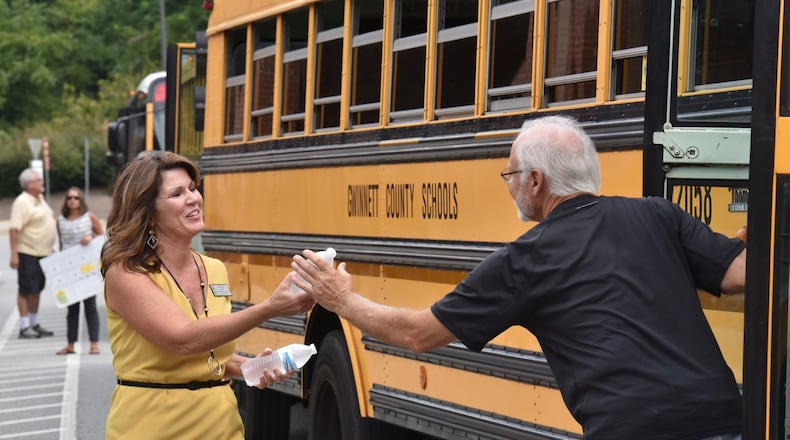With near-record temperatures this week, area students may find the bus ride home similar to roasting in an oven.
Many school buses in metro Atlanta aren’t equipped with air conditioning. School officials said they are monitoring the weather and taking precautions for student safety. They leave the windows open all day and try to park the buses in the shade when possible so they won’t be as hot when students board. The kids are allowed to bring water on board as well.
There have been no reports of anyone succumbing to the heat while being transported by school bus.
VIDEO: More on extreme heat
The temperature in metro Atlanta was near 100 degrees by Tuesday afternoon, with highs well over 90 forecast for the rest of the week. “Tuesday could be Atlanta’s hottest day in three years,” said Channel 2 Action News meteorologist Brian Monahan..
Officials in two districts with the largest bus fleets, Gwinnett County and Fulton County, point out that air conditioning isn’t an industry standard feature on a school bus. Both districts have air conditioning on buses for special-needs students because many of them are medically fragile.
Related story: How does federal school bus seat belt policy affect Georgia?
Related story: More Georgia school buses using propane
Clayton County, with nearly half as many students as Fulton County, said all its school buses are air conditioned.
Cost may be a factor. A bus with air conditioning can cost about $5,000 more than one without AC.
“Our regular ed buses do not have AC because the majority of them are used on routes that last less than 30 minutes,” said Gwinnett spokesman Bernard Watson. “The students are not on the bus for very long, and with the windows open and the bus moving, the air flow is very good.”
Keeping the windows down is good, said pediatrician Jennifer Shu, but kids, especially the youngest, don’t have the same judgment as adults and may not let someone know if they are feeling the effects of heat exhaustion.
“They don’t have as much control and don’t always know to ask for water or to say that they feel faint,” said Shu, who is also the medical editor of the American Academy of Pediatrics’ parent website HealthyChildren.org. “And kids overheat faster than adults. They have a different skin-to-surface ratio. Think of it like baking a potato — a smaller bakes faster than a larger one.”
Most bus drivers are behind the wheel for as much as four hours a stretch. Gwinnett provides them with evaporative bandanas, and many buses have small fans aimed at the driver.
Fulton officials said they allow students to bring water onto the bus, but Shu encourages school officials to go further and insist that every child take a bottle of water with them.
“By the time you actually feel thirsty you are already dehydrated,” she said.
By the time the dismissal bell rings Wednesday, parts of the region may be at record temperatures, said Monahan. The last time it was 97 degrees was Aug. 18, 2018 and temperatures reached 98 on July 25, 2016. With the humidity, the “feels-like” temperatures will be closer to 100 to 110 degrees across North and Middle Georgia as kids head home. A heat advisory is in effect for much of North Georgia.
Although this type of weather doesn’t occur the entire school year, Gwinnett County is adding air-conditioned buses for longer trips.
“This year we bought five activity trip buses with AC. Activity trip buses travel the furthest, (sometimes South Georgia) and are used for overnight trips involving teams,” said Watson. “Our goal is to have 19 activity trip buses with AC within four years.”
There may be a few more sweltering bus rides ahead before the weather eases up. There will be a slight cool-down the rest of the week, but midday temperatures are still expected to be in the 90s through the weekend, said Monahan.
Tips for parents
When your child gets off the bus, check for signs of dehydration and heat exhaustion, advises Dr. Jennifer Shu. Look for:
- Flushed cheeks
- Clammy skin
- Feelings of weakness
- Extreme thirst
- Decreased urination
- Muscle cramps
- Heavy breathing
She urges parents to dress children in light, breathable clothing and allow them lots of liquids while the temperatures are so high.
About the Author
The Latest
Featured



